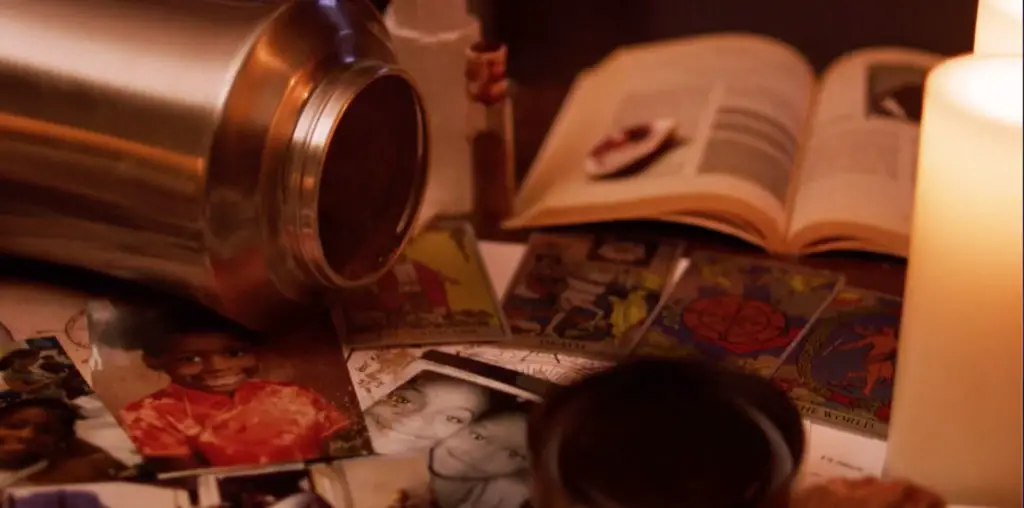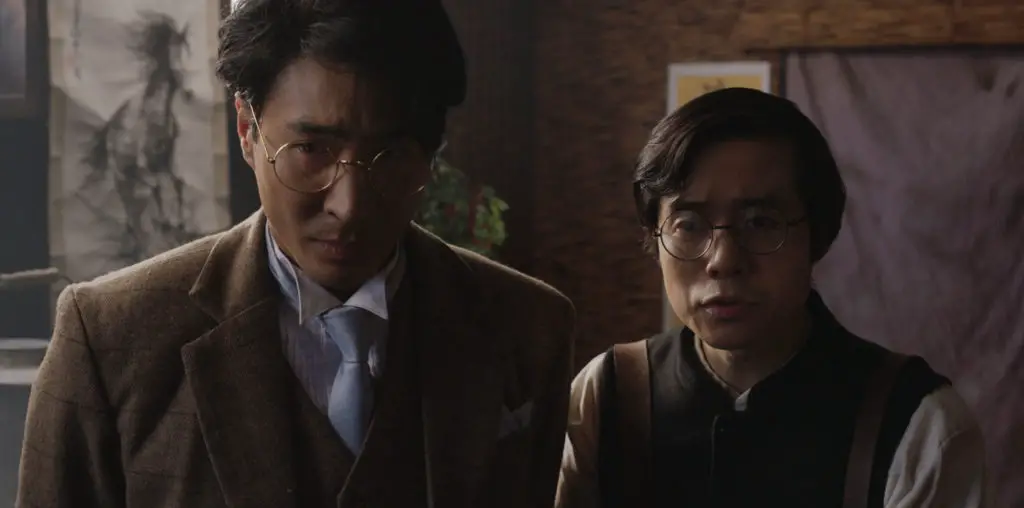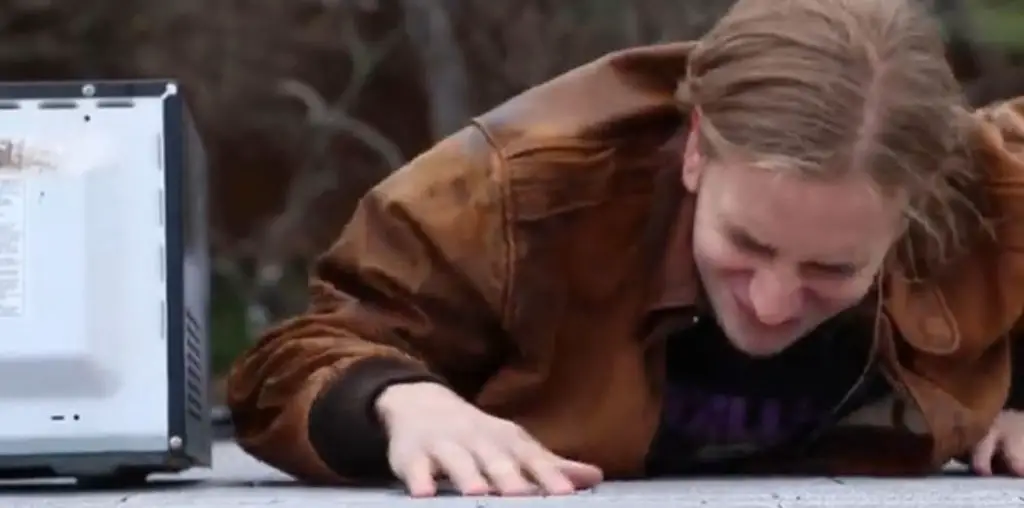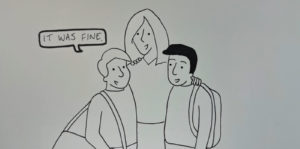
Love in the Time of Caller ID takes place in a time when we had phones at home and answering machines that allowed friends and family to leave messages when you’re away. A mother eagerly awaits the arrival of her two boys after spending the weekend with their father.
The mother is excited to show off their new answering machine and thinks it would be fun if the boys came up with a greeting for the machine. As the boys think about what to say, it’s sci-fi night on the television. As the boys prepare for a night of television, Mom takes the opportunity to slip out and visit her new boyfriend. Disappointed, the boys ask Mom to stay, but she’s needed at her boyfriend’s home with his kids.
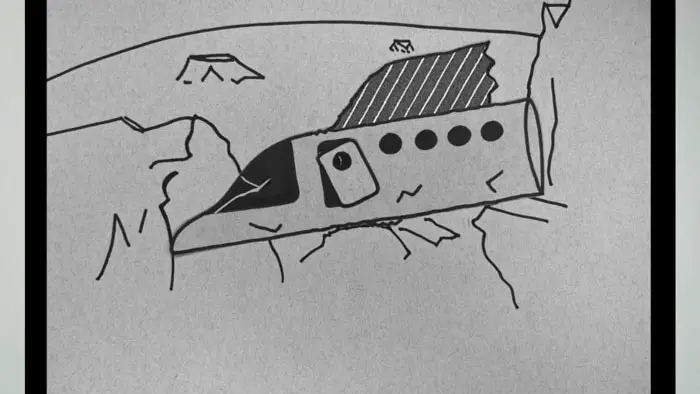
“The mother is excited to show off their new answering machine…it would be fun if the boys came up with a greeting…”
So, I’ll state the obvious. Love in the Time of Caller ID is about as simple a short film as you can get. The film features hand-drawn panels (like a comic strip) shown one after the other against a synthesized melodramatic soundtrack. The art itself is line art, and the title cards and credits are handwritten. Simple and cheap, which means to you, the emerging indie filmmaker…nothing can stop you from making your movie.
I’ll say it over and over again: having a good story will overcome many imperfections, and the story is where Love in the Time of Caller ID shines. Its story focuses on the two boys who suddenly realize their mother may be drifting away to a new life with her boyfriend. Running parallel to the main story is the science-fiction film the boys are watching about a couple soon to be separated by a critical space mission.
With very simple line drawings, filmmaker Neil Sandhoefner conjures all the emotion in this austere family story. It would be easy to dismiss Love in the Time of Caller ID because of its no-budget (cheap) production values, but as a story, Sandhoefner cuts right to its heart.
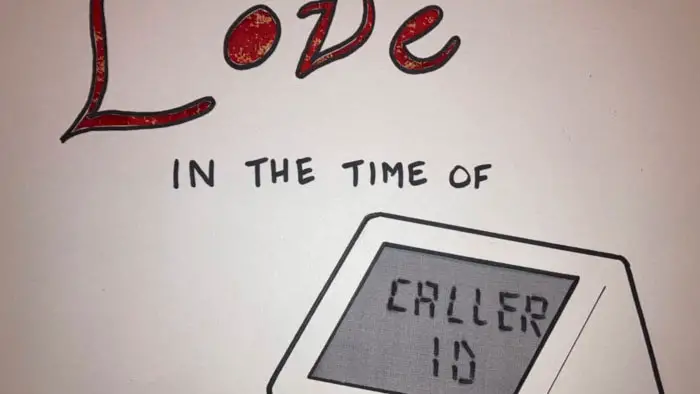
"…conjures all the emotion in this austere family story."
